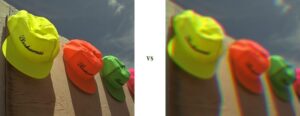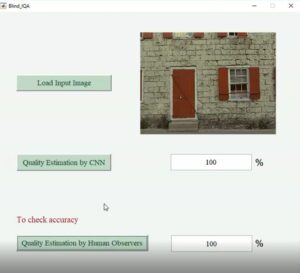IT
Neural network algorithm that evaluates and outputs image quality with the same precision as human subjectivity
Overview
Organization Name
Prof. Tetsuya Shimamura, Graduate school of Science and Engineering, Saitama University
Documentation
Summary
Up to today, the evaluation of image quality was performed by statistically processing and quantifying the subjective assessments of a large number of people, which requires many work processes. In our laboratory, we have developed an algorithm that uses neural networks to output image quality evaluation with the same precision as human subjectivity. On top of the immediate output, it is also possible to analyze image quality degradation factors such as light effects (shadows, lighting, etc.) and compression. Moreover, the technology may be applicable to video and audio quality evaluation also. For example, applications to image inspections, onboard cameras, robot vision, etc. could be possible.
Details
Simplified Diagram
Background
Up to today, the evaluation of image quality was performed by statistically processing and quantifying the subjective assessments of a large number of people, which requires many work processes. For example, the left image on the bottom shows high quality and the one on the right has low quality. However, such work requires many processes.
In this study, we are developing an algorithm that uses neural networks to output image quality evaluation with the same precision as human subjectivity.
We welcome companies that are willing to utilize and commercialize this algorithm.
Technical content
We have established a technique that can output image quality when a certain image is inserted by using a database formed of a large amount of image quality evaluation results performed by human subjectivity and a neural network learning. The following is a demo standard screen.
1)Press the “Load Input Image” button to specify the image file you want to evaluate.
2) After selecting the file, click the “Quality Estimation by CNN” to output the image quality value by the algorithm. Note that clicking “Quality Assessment by Human Obervers” outputs the values that were subjectively evaluated by humans for demonstration purposes.
The following is a high-quality image case.
Below is a case of low-quality images.
Strengths of technology and know-how (innovation, superiority, utility)
The advantages of noise reduction/removal technologies developed in this laboratory are as follows.
1) An image quality evaluation equivalent to human subjectivity can be outputted immediately. The following is the output value when the image is degraded from left to right (the highest is 8 points, and the score decreases as the quality is degraded.) MOS is the human subjective value, and Proposed is the output value of the proposed algorithm. Almost the same numbers are outputted.
You can also create a degradation list of image quality (24 types) and identify under which list the subject falls under. For example, you can identify deterioration factors such as whether the image has noise or is quantized, or whether if it is blurred or compressed.
PSNR is the most well-known technique for image quality evaluation, and other techniques are available as well. The following is a diagram showing how the evaluation indices such as PSNR are consistent with human subjective values such as PLCC and SROCC. The closer the value is to 1, the more consistent. In PSNR, both PLCC and SROCC are 0.639, but in the proposed method, PLCC is 0.981 and SROCC is 0.977, which are very close to human subjective values.
Image of Allied Company
We are willing to cooperate with the following companies for example.
1) Companies or research institutes that require image quality evaluation.
2) Companies or research institutes that require video quality evaluation.
3) Companies or research institutes that carry out research and development of cameras.
4) Companies or research institutes that carry out research and development of inspection systems using image processing.
5) Companies or research institutes developing systems that use digital cameras and video cameras (such as onboard systems and robots.)
6) Other companies or research institutes that are willing to utilize this technology.
Utilization of technology and know-how (image)
The technology can be used to evaluate image quality. Also, in addition to still images, it can be applied to the evaluation of video, audio, and so on.
For example, it is possible to quantify the degree of light effect (e.g., lighting and shadows) at the time of imaging and analyze its reasons, apply on the uses that require high-quality imaging (e.g., medical images, etc.), and monitor whether there is a problem with the image taken during infrastructure periodic examinations.
It is also possible to narrow down only the images with good quality when dealing with large amounts of image data.
Moreover, for videos, it can be applied to the case where the shooting environment changes dynamically, such as when mounted on an onboard camera or when attached to a robot (robot vision.)
Flow of Technology and Know-How Application
If you are interested in the use of this technology or product development, please feel free to contact us. We will provide explanations with demonstrations.
Description of the Technical Terms
PSNR
Also referred to as the peak signal-to-noise ratio, PSNR is an engineering term for the ratio of the maximum power a signal can take and the noise that causes degradation, which affects the reproducibility of image quality. As many signals have a very wide dynamic range, the PSNR ratio is usually expressed in base 10 logarithm.
PSNR is most commonly used as a measure of the reproducibility quality of codes that use lossy compression, such as image compression.








